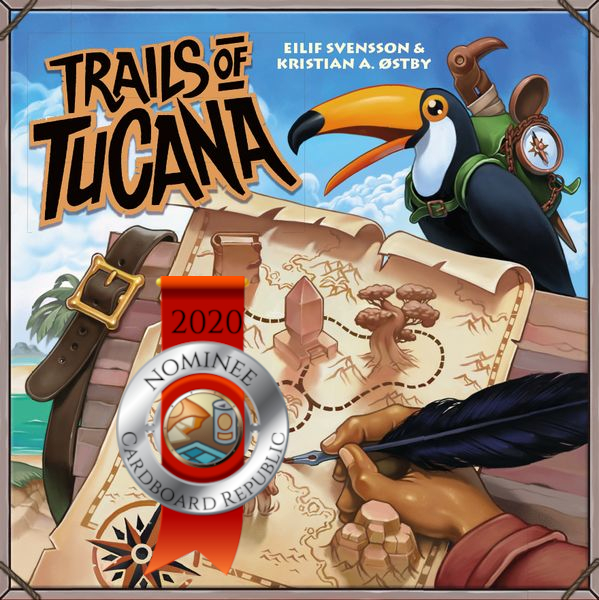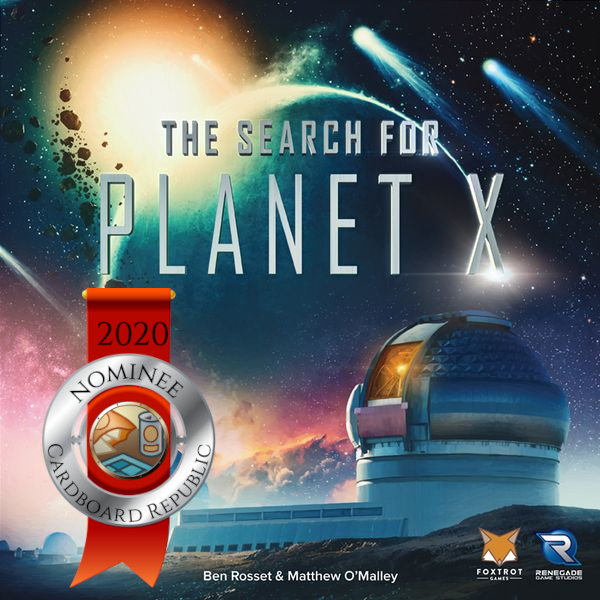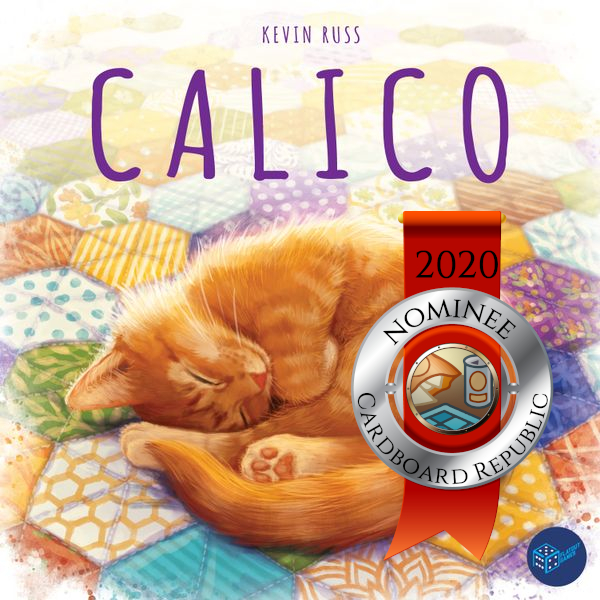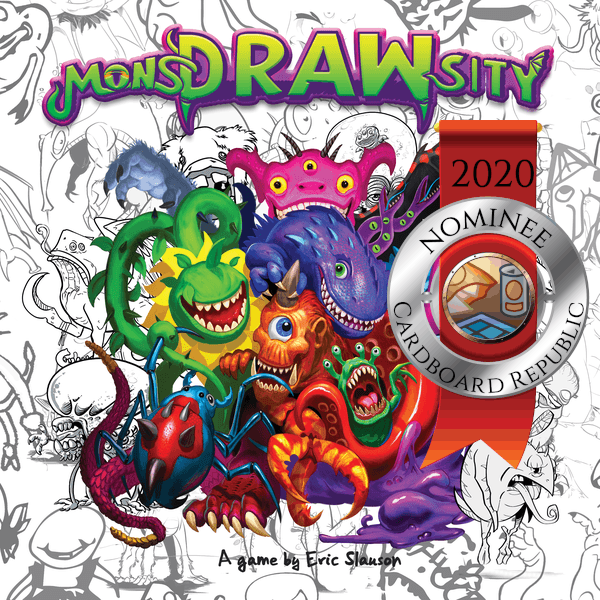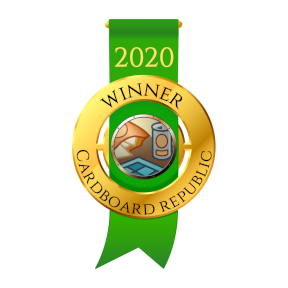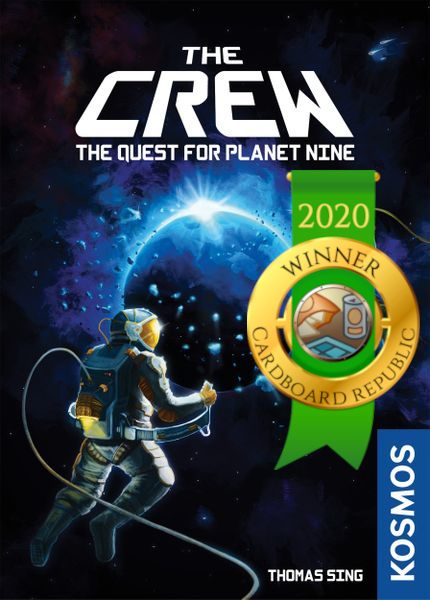The Cardboard Republic has rolled out the annual Laurels of the Republic awards, celebrating the best new games released in 2020 for each of the gamer archetypes. What follows are the finalists for one of those groups.
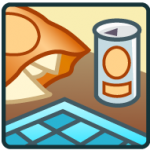 There are few things that Socializers want more out of games than a means to engage with other players as much as possible. If they were a clan, their credo would be ‘Light on Rules, Heavy on Interaction’. Games to this group are less about picking out intricate strategies or figuring out a way to win at any cost than they are about a means to collectively enjoy spending time with other people. As a result, this group prefers games that either have short and simple playthroughs or those that permit them the opportunity to, well, socialize with other players.
There are few things that Socializers want more out of games than a means to engage with other players as much as possible. If they were a clan, their credo would be ‘Light on Rules, Heavy on Interaction’. Games to this group are less about picking out intricate strategies or figuring out a way to win at any cost than they are about a means to collectively enjoy spending time with other people. As a result, this group prefers games that either have short and simple playthroughs or those that permit them the opportunity to, well, socialize with other players.
And with that, here are The 2020 Laurel Finalists for Socializers:
Honorable Mention: Hues and Cues
Publisher: The Op | Players: 3-10 | Play Time: 30 Minutes
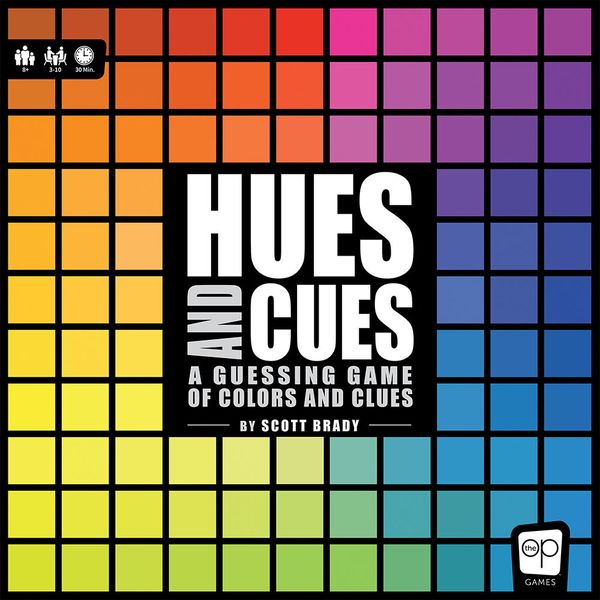
Games that involve color in some way are nothing new. They’ve been a staple mechanism in game design for decades, particularly for children. Somewhere along the way an idea emerged: what if we removed all the extraneous parts and literally just made a game about the colors themselves? Which directly led to a series of games that aren’t that far off from Color Swatches: The Board Game.
Hues and Cues is a continuation of that trend but is done in an enjoyable way that’s paradoxically more constrained but less difficult than some of its predecessors.
At its heart, Hues and Cues is a guessing game. Specifically, trying to guess the precise color another player is guiding you to. A highly cerebral, multilayered, AP-inducing game this is not. It’s designed to be basic, accessible, and short. Yet this unencumbered design approach proves to be an asset to its appeal, not a liability.
In Hues and Cues, players take turns as the clue giver. That player draws a card containing a handful of various color hues, each matching one of the nearly 500 different spaces on a gridded chromatic board. They secretly pick one and give a one-word clue describing that color without referencing its location on the board or any item in the room. Everyone else then places a pawn on which color square they think it is. This is repeated with a two-word clue. Afterwards, players are awarded points based on how close they came to the correct answer. The canvas is wiped clean and you begin anew.
Once each player gets to play Marco Polo with the color palette twice, the person with the most points wins.
Despite its monotone premise, Hues and Cues nevertheless demonstrates itself to be a charming, laid-back, and engaging experience whether you’re the one trying to come up with useful clues or as the rainbow-hunting guessers. Its ability to engender table-wide participation and a jovial tone is present both in the excitement of successes as well as head-smacking misses. This is because its intrinsic appeal isn’t actually about guessing colors so much as it is a means of better understanding one another and the sometimes overlapping, sometimes disparate ways we each use color to create individual associations and perceptions in the world around us. For Socializers, this playful combination the interesting, interactive, and interpersonal is one colorful setting that’s always hard to turn down.
The Nominees
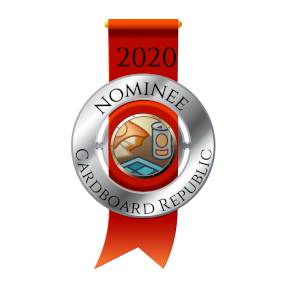
Number Five: Trails of Tucana
Publisher: Aporta Games | Players: 1-8 | Play Time: 20 Minutes
It wouldn’t quite be a proper social gamer’s list without something out of the roll-and-write family, would it? Joining the likes of party and social deduction games, the roll-and-write genre has quickly become both ubiquitous and synonymous with the casual gaming community due to their short play times, portability, inviting nature, and the ability to involve a fair amount of players with minimal effort. As with the years before, 2020 saw more than two dozen such titles released by publishers large and small. Given everyone’s gaming habits over the last year (or lack thereof) due to the pandemic, interest in this particular genre only grew stronger, in part due their Zoom-capable potential.
Yet few reached the level of appreciation and praise than that of the elegant Trails of Tucana. Originally released at Essen 2019, Tucana met significant delays securing widespread distribution for a number of factors and didn’t hit the US officially until nearly a year later. In that time, however, appeal for this light and breezy mapmaking exercise never wavered. And with good reason.
Coming from the same intrepid designers as the similarly lauded Avenue (aka Kokoro), Trails of Tucana presents each player with a hex map of the untamed island of Tucana, complete with a handful of notable landmarks sprinkled throughout and a randomized ring of lettered coastal villages. Your task is to trailblaze across the island and establish paths between villages and those landmarks over 2-3 rounds, which are controlled by a deck of terrain cards.
Turns are taken simultaneously by flipping over the top two cards of the deck, each depicting a specific terrain hex. Each turn you must choose a spot on your map where the two depicted terrain types are adjacent to one another and…draw a line between them. Which tile pair you choose is open to your route-building whims, but some mild planning is required as your singular goal is to connect as many landmarks and matching villages to one another as possible and you only have a couple rounds to do it. Your surveying skills continue until the deck runs its course and you determine whose inner Ptolemy best demonstrates their mapmaking prowess.
Although Trails of Tucana isn’t drastically reinventing the genre, what makes it especially attractive to this group isn’t the game itself so much as the atmosphere it fosters. With a basic and straightforward premise, breezy pacing, and incremental decision-making moments, Tucana both encourages and facilitates outside conversation throughout its short while still offering enough material for players to have a vested interested in the outcome. To Socializers, the heart of any game is how well it brings people together around a shared experience, and Tucana carves an excellent path towards achieving exactly that.
Number Four: The Search for Planet X
Publisher: Foxtrot Games / Renegade Game Studios | Players: 1-4 | Play Time: 45-60 Minutes
It doesn’t take long wading into the board gaming hobby to quickly learn that not every game is designed for every person. People come with a variety of interests, preferences, and their own notions on what they find a fun use of their time. Whether it’s solving puzzles, besting one’s competition, or escaping to another realm, games offer an extensive range of options to fit your desires. Part of the adventure (and part of our driving mission) is figuring out which games are best for you. While some are enigmatic in nature and require extensive effort to find out, others elicit an irresistible siren song to their intended audience right from the start.
Or for this title, a homing beacon.
In the studious and academic-flavored deduction game The Search for Planet X, each player is an astronomer looking to make their big break into the history books by deciphering the location of the mysterious Planet X which lies hidden at the very edges of our solar system. In it, the sky is divided up into different sectors, each containing exactly one astronomical feature. By taking turns scanning the skies, engaging in academic research, and compiling gathered information to make periodic educated guesses as to the contents of each sector, eventually someone will determine where Planet X is and collect their long-desired reward: a byline in a scientific paper.
Sagan would be so proud.
However, Clue in Space this is not. Thanks to its app-driven setup logic, Planet X is a masterful hybridization of analog and digital solutions that blend the tactile thrill of traditional pen-and-paper sleuthing of secret information with a high-tech programming engine of practically endless permutations and minimal checksum minutiae. Like any great astronomer touting the wonders of the cosmos, Planet X takes the basic conceits of what you know of the deduction genre and creates a richer, more vibrant, and more awesome picture that’s hard not to be impressed by.
With a flavorful premise, accessible ruleset, and a challenging-but-leisurely atmosphere, The Search for Planet X offers an enticing experience that fosters outside conversation while presenting an irresistible cosmic mystery to solve. Though it has a slower pacing and less direct engagement than other nominees on this list, the core to The Search for Planet X nevertheless provides some of the best qualities in what Socializers gravitate towards most in a game.
Number Three: Calico
Publisher: Alderac Entertainment Group | Players: 1-4 | Play Time: 30-45 Minutes
2020 was an incredibly strange year for a lot of reasons, which admittedly included trying to keep track of new game releases. From shipping and production interruptions to a near-complete loss of in-person events, the hobby was often a siloed and decentralized information morass. One side effect of this was that it was harder than usual for games to generate that oft-desired headline-grabbing buzz.
Calico was one of the exceptions.
You don’t need to scratch much beneath the surface to understand why this particular game generated the sort of popularity it did. It’s a game about making colorful quilts. It has cats who want to sleep on those quilts. It’s a concise and straightforward family-weight tile-laying game. And the whole vivid mosaic is illustrated by the estimable Beth Sobel plying her trademark bucolic style to the entire proceedings. Intrinsically, Calico served as an antithesis to the circumstances of the world around it, providing a comforting and pleasantly homespun vibe that clearly struck a chord. So much so that AEG quickly sold out of its first print run. And then its second.
And all one needs to do is play it to fully understand why.
In Calico, each player is assembling their own patchwork quilt with the intent of crafting the comfiest, coziest, most nap-friendly blanket possible. Players begin with an unfinished quilting board and a handful of design goals. Tiles in the game contain one of six different patterns and belong to one of six different colors. Most goals care about arranging some combination of colors and/or patterns and provide valuable points for doing so. As a result, even for a lightweight game Calico deftly rewards both meticulous placement and minor forethought.
Gameplay in conducted by way of an incredibly basic ruleset: each turn you select one of the two tiles in your hand and play it to an open space on your board. Then you draft a replacement. Along the way you can achieve bonus points for color groupings, or, as the theme conveys, attract the attention of one of the game’s cats who wish to curl up to specific patterns laid out in specific ways. This continues until everyone’s board is complete; the player who stitches together the most goals and bonuses claims the reward of a nice cup of tea and a good book.
Calico is a remarkably accessible game with high replayability and an undeniably alluring visual acumen, the result of which fosters an enjoyable atmosphere between players despite its individually-focused tableau nature. It provides just enough material to warrant meaningfully weighted decisions while allowing the entire affair to be enjoyed in a casual, leisurely manner, and it is that graceful balance that underscores just how tailor-made Calico is to this group.
Number Two: MonsDRAWsity
Publisher: Deep Water Games | Players: 3-8 | Play Time: 30 Minutes
As aforementioned, 2020 was a year where quite a few games released without much fanfare, MonsDRAWsity included. Still, this one quietly released in the final quarter of the year but quickly earned its sleeper hit status as a worthwhile party-style drawing game. Which is even more remarkable given that there weren’t a lot of in-person parties happening at that time…we hope.
MonsDRAWsity is essentially what you get if you were asked to be sketch artist, except every single one of the suspects is a cast member from Nickelodeon’s Aaahh!!! Real Monsters. And that goes about as well as you’d think.
Similar to how Telestrations dials in on the comedic side of cumulative error and misinterpretation, the success behind MonsDRAWsity resides in the twofold effect of being tasked to draw absurd creatures solely based on someone’s verbal directions while leaning into (and highlighting) the utter fallibility of human memory. Oh, and the entire thing is timed.
Each round one of the players is charged with being the Witness. They are given a scant 20 seconds to draw a monster card and memorize as much detail about this strange Lovecraftian fever dream as possible. Then they cast the card aside and describe what they’ve seen to the remaining players who have 2 minutes to frantically recreate what is being told to them. Afterwards the card is revealed, hilarity ensues, and the players vote on who they think made the most accurate drawing while the Witness secretly guesses who they think will win the vote. Those players each get points. Rinse and repeat until everyone has been the Witness twice.
While MonsDRAWsity technically has a point winner, like all great social games, its true appeal is experiential. You will generally fail at your task in MonsDRAWsity. Repeatedly. Yet the frenetic charm to MonsDRAWsity isn’t how well you succeed – or can draw – but instead how it gets you to celebrate everyone’s collective failures and offbeat interpretations. It is at that moment, when everyone is reveling in the haphazard mélange of one another’s attempts when the game is at its most electric and endearing. With its high energy potential, capacity for up to 8 players, and an inherent focus on appreciating the journey over the destination, MonsDRAWsity is precisely the kind of go-to party game Socializers are drawn to. And there’s nothing remotely sketchy about that.
In many respects it’s remarkable MonsDRAWsity made it all the way to this category’s runner-up spot given that it had less time on the market and less buzz than any of the other nominees. It’s commendable, and indeed the very definition of a sleeper hit. However, there was another title in 2020 to claim the top space – both literally and figuratively…
The Winner
2020 Socializer Laurel – The Crew: The Quest for Planet Nine
Publisher: Thames & Kosmos | Players: 2-5 | Play Time: 20 Minutes
On some level, you’re probably not all that surprised we wound up here. Of all the titles on the list, The Crew is arguably the most well-known. It has been gathering up praise and accolades at an embarrassing rate since its initial Essen 2019 release and subsequent US release in early 2020. None of that factored into our own decision-making, but in the end we emerged with the same conclusion: all of the attention is well-earned.
It really is that good.
This is a feat all the more impressive considering that trick-taking games (and team-based trick-taking for that matter) dating back several hundred years. To take something that established and through ingenious iteration create a new form of gameplay that’s challenging, creative, and somehow even more interactive is not an easy accomplishment. But that’s precisely what designer Thomas Sing did.
The core of The Crew is familiar trick-taking territory: players take turns playing cards of various colored suits from their hand and must follow if they can, otherwise throwing any color or one of four rocket (trump) cards. The person with the highest valued card of the initial color (or the trump) wins the hand and starts the next turn.
The devil, naturally, is in the details.
Most importantly, unlike most trick-takers The Crew is fully co-operative: you are all brand new astronauts setting out to discover the possibility of a heretofore unknown planet in the solar system. To win, players must accomplish their mission, which generally consists not of having a set number of tricks but making sure specific players win specific cards randomly determined at the start of each game. Adding to the difficulty, players can’t overtly discuss which cards they have. To alleviate that some, each player can publicly reveal one card per game, usually to indirectly communicate to the team an important piece of information.
Assuming your team understands the intonation correctly anyway.
That too is part of the elegance to The Crew. Similar to other team-based card games such as The Game or The Mind, the longer you play with the same people, the more in-tune you get with one another, setting up a masterful sense of synchronicity. When you then factor in the game comes with 50 different mission scenarios of incremental difficulty, The Crew quickly ensnares you with an irresistible desire to perpetually do One More Round.
With a team-based approach that promotes a true sense of camaraderie both as a goal and as a process, The Crew is incredibly engaging and interactive, and yet it never becomes overwrought in complexity or overpowers the inherent casual nature of most trick-taking games. This alluring combination of factors makes The Crew a game that’s dynamic, inviting, scalable, and infinitely replayable. As a result, you certainly don’t need to be a rocket scientist to be able to calculate why it earned this archetype’s top spot for 2020.
![]()
The Crew Contest!
We thought about different ways to celebrate the winner of this year’s Socializer Laurel, including planning a livestream where we would sit and play the game repeatedly until we accomplished all 50 missions, or seeing if NASA would let us come hang out at one of their actual astronaut training sites with a handful of winners for funzies. However, for a variety of reasons, neither really worked out. For one, the whole pandemic thing really put a damper on putting a bunch of people together in the same room for what probably would have been a solid couple days. And while you’ve never truly lived until you try a trick-taker over Zoom, that whole idea fell apart – much like the scotch tape holding the cards to the screens. In the end we had to concede that it may have not been all that feasible. In the case of the latter, let’s just stay NASA was surprisingly curt about the matter.
Like almost belligerently so.
We’re just saying, you’d think if they weren’t actively sending astronauts up that they wouldn’t mind us co-opting a few machines for a handful of space-theme team building exercises, but they weren’t particularly willing to budge on the matter. We didn’t think it was a waste of time, but clearly they did. And we have the restraining order telling us to stop asking to prove it.
So in the end we opted for the most direct approach: providing one lucky winner with the opportunity to enjoy the award-winning game first hand. So that is what we’re going to to do right…now.
That’s right! Enter below for your chance at your very own copy of The Crew – PLUS a copy of its 2021 sequel The Crew: Mission Deep Sea!
In honor of their award recognition, Thames & Kosmos has kindly provided a copy of this game for giveaway purposes.
![]()
Be sure to check out the 2020 Laurel Award pages for the other archetypes once they go live!

